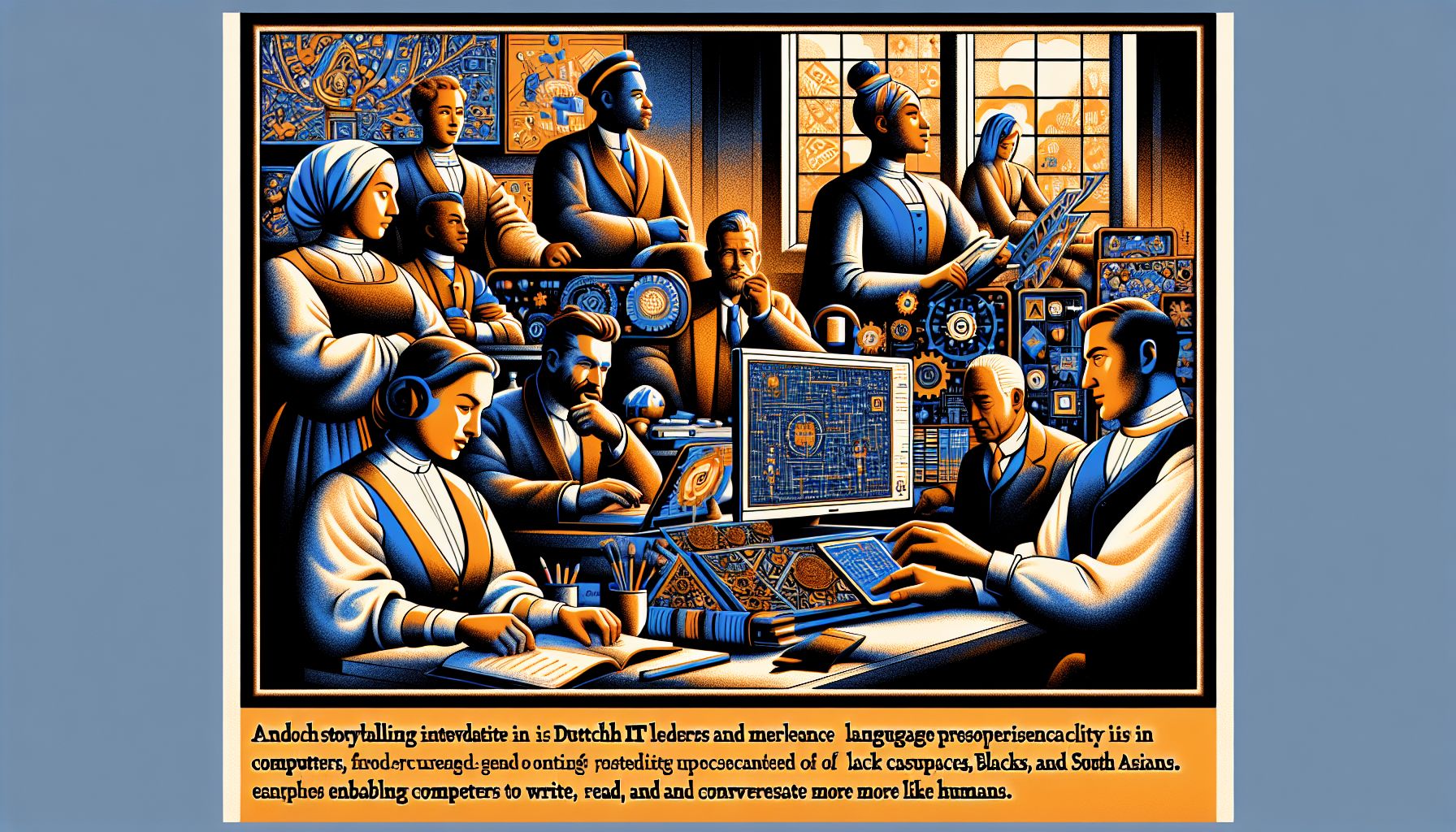Dutch IT Leaders Examine AI's Potential in Language Proficiency

Dutch IT leaders are exploring how AI can improve language proficiency, enabling computers to write, read, and interact more like humans, as highlighted in a recent blog post.
Understanding Large Language Models (LLMs)
Large language models (LLMs) represent a significant leap in artificial intelligence, designed to generate text for a wide array of purposes. Unlike models with specific goals, LLMs possess a comprehensive understanding of syntax and semantics, which are crucial for constructing sentences and interpreting their meanings. This foundational knowledge allows LLMs to engage in listening, speaking, reading, and writing in a coherent and continuous manner, effectively communicating thoughts and information.
The Role of Language Proficiency in AI
Language proficiency, as defined by experts, is the ability to listen, speak, read, and write in a connected and seamless manner. This proficiency is essential for AI systems aiming to interact naturally with humans. Peter Hinssen, a notable voice in the field, emphasizes that while AI tools can assist in these areas, they often lack the creativity and passion inherent in human communication. Hinssen points out that AI-generated text can sometimes appear mechanical and uninspired, which can be off-putting to users.
Advancements in AI Translation and Nuance
Recent advancements in AI have led to models capable of translating text with remarkable accuracy, incorporating variations and nuances that were previously challenging for machines to grasp. This development is particularly significant given that the English language alone comprises approximately 750,000 words. Despite these advancements, it is crucial to acknowledge that AI-generated language still requires human oversight to ensure it meets the desired quality and resonates with its audience.
AI in Business Intelligence: Databricks’ Contribution
Databricks, a key player in the AI and business intelligence (BI) space, has introduced innovative solutions to broaden the availability of analytics and data insights. Their AI/BI system includes a low-code interface for creating dashboards quickly and a chat interface named Genie for answering ad-hoc questions. According to Ali Ghodsi, co-founder and CEO of Databricks, an AI-centered approach is necessary to develop truly intelligent BI solutions that cater to business-specific nuances. The system’s core utilizes multiple AI components to answer business questions, continuously improving through human feedback.
Snowflake’s Strategic Acquisition of Reka AI
In another significant move within the AI landscape, Snowflake is exploring the acquisition of Reka AI, a company specializing in large language models. These models are utilized for generating text, answering questions, and translating languages. This potential acquisition aligns with Snowflake’s strategy to enhance its AI offerings, following the launch of its Arctic language model in April 2024. By integrating Reka AI’s capabilities, Snowflake aims to bolster its position in the AI market and expand its service portfolio.
HPE and NVIDIA’s AI Enablement Program
Hewlett Packard Enterprise (HPE), in collaboration with NVIDIA, has announced a new AI enablement program for partners. This initiative includes AI-acceleration workshops, skill development through self-study and certifications, and various competency programs to support the AI lifecycle. The goal is to help partners grow their annual revenues and build new revenue streams by leveraging HPE and NVIDIA’s AI solutions. The program is part of HPE’s broader strategy to integrate AI into hybrid cloud environments, enhancing profitability and innovation for its partners.
Microsoft Copilot at PwC
PwC has integrated Microsoft Copilot, an AI assistant, into its operations to enhance productivity and creativity among its employees. Copilot leverages language models and Microsoft 365 apps, using data from calendars, emails, and chats to streamline tasks. PwC’s adoption of Copilot follows a successful test phase, during which employees experienced significant improvements in their daily workflows. This integration is part of PwC’s broader effort to utilize AI to transform work processes, reduce repetitive tasks, and free up time for creative and strategic activities.
Bronnen
- www.dutchitleaders.nl
- www.dutchitchannel.nl
- www.dutchitchannel.nl
- www.dutchitchannel.nl
- www.dutchitleaders.nl
- www.dutchitleaders.nl

